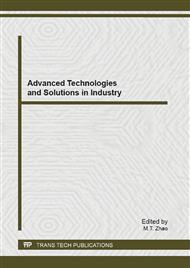p.723
p.727
p.731
p.735
p.739
p.743
p.747
p.751
p.755
Based on Artificial Neural Network Simulation of Alloy Finite Element
Abstract:
Artificial neural networks are composed of interconnecting artificial neurons (programming constructs that mimic the properties of biological neurons). Artificial neural networks may either be used to gain an understanding of biological neural networks, or for solving artificial intelligence problems without necessarily creating a model of a real biological system. First modal analyses of microstructure defects are performed in ANSYS. Second the genetic algorithm is implemented in MATLAB to Calculate the Value of b and p. The last, The FEM analysis results are imported in ANSYS about the Stress distribution. The result presented in this paper is obtained using the Genetic Algorithm Optimization Toolbox.
Info:
Periodical:
Pages:
739-742
Citation:
Online since:
June 2013
Authors:
Price:
Сopyright:
© 2013 Trans Tech Publications Ltd. All Rights Reserved
Share:
Citation:


